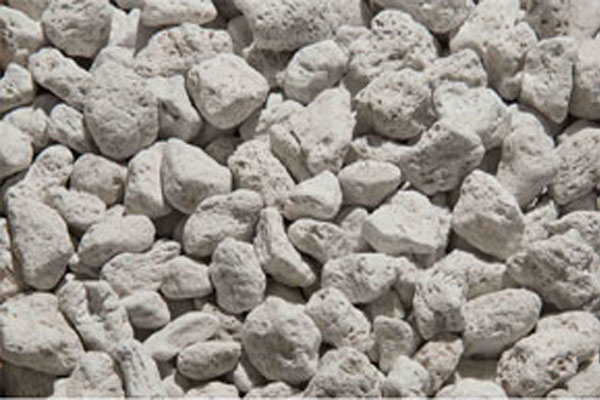|
Pumice called pumicite in its powdered or dust form, is a volcanic rock that consists of highly vesicular rough textured volcanic glass, which may or may not contain crystals. It is typically light colored. Scoria is another vesicular volcanic rock that differs from pumice in having larger vesicles and thicker vesicle walls and being dark colored and denser.
|
|
Pumice stone usage in stone wash
Stone washing is a textile manufacturing process used to give a newly manufactured cloth garment a worn-in (or worn-out) appearance. Stone-washing also helps to increase the softness and flexibility of otherwise stiff and rigid fabrics such as canvas and denim.
In stone-washing the worn-out look is given purposely. The fabric is washed along with pumice stones. The stones and denim are spun together in large industrial washing machines. The longer they are spun together lighter the color of the fabric with better contrasts would result. The time duration of this procedure is set beforehand so as to avoid the tear and wear of the fabric. Thereafter, the fabric undergoes various other processes of rinsing, softening and finally tumble-drying. These stone-washed fabrics are used for different purposes — garment making as well as for upholstery purpose.
The process uses large stones to roughen up the fabric being processed. The garments are placed in a large horizontal industrial clothes washer that is also filled with large stones. As the wash cylinder rotates, the cloth fibers are repeatedly pounded and beaten as the tumbling stones ride up the paddles inside the drum and fall back down onto the fabric.
A number of people and organizations have claimed to have invented stone-washing. According to Levi Strauss & Co., Donald Freeland, an employee of the Great Western Garment Company (later acquired by Levi's), invented "stone-washing" denim in the 1950s. Inventor Claude Blankiet has also been credited with having invented the technique in the 1970s. The jeans company Edwin claims to have invented the technique in the 1980s.
- To create or produce irregular fading or old looking affect on garments.
- To remove dust, oil spot, impurities from the garments.
- For soft felling to wear the garments i.e; to improve softness.
- To achieve the buyer washing standard.
Chemical Analysis
Pumice stone’s typical chemical composition is:
| Silicon dioxide SiO2 | 71.91% |
| Aluminium oxide Al2O3 | 12.66% |
| Ferric oxide Fe2O3 | 1.13% |
| Calcium Oxide CaO | 1.46% |
| Magnesium Oxide MgO | 0.32% |
| Sulphur Trioxide SO3 | 0.03% |
| Potassium Oxide K2O | 4.30% |
| Sodium Oxide Νa2O | 3.45% |
| Calcification Loss | 4.53% |
| Indefinable content | 0.21% |
| 100.00% |


